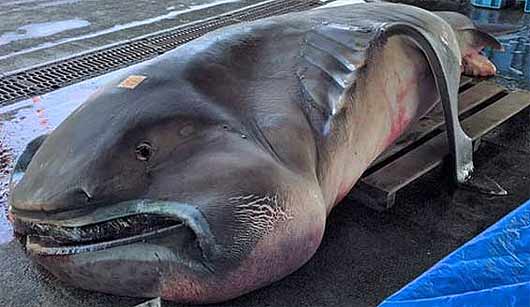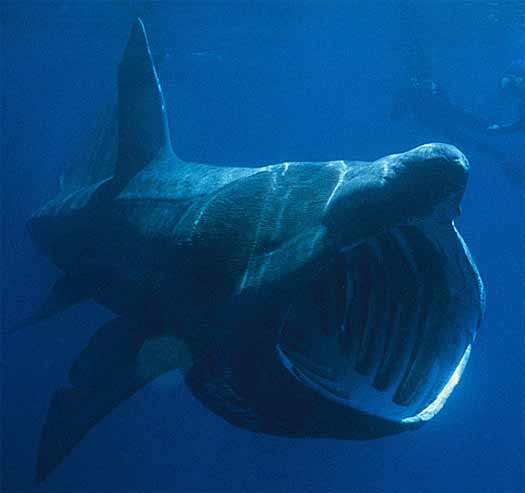Megamouth Shark – Rare, Bizarre-looking Filter-feeder

The megamouth shark is a living reminder that the sea has yet to give up all of its mysteries. The existence of such a huge, bizarre creature was not even suspected until 1976 when one became tangled in some lines deployed beneath a research vessel. It was found to be not only a new species but a new genus, and a new family of shark altogether, with only distant ties to other mackerel sharks. It is not closely related to anything known to science! It is very rare and up to now only around 60 specimens have been captured, on both sides of the Atlantic and Pacific, as well as the Indian Ocean, in both tropical and temperate zones. Many specimens have been preserved at museums or other institutions, some have been discarded, some released alive, and one was chopped up and eaten in the village where it was captured. One of the released sharks was tagged with a transmitter and tracked for two days, giving us the only meager bit of information that we have about the natural behavior of this species. Several other megamouths have been photographed or filmed at the surface, but not captured. One of those sighted was in the company of three sperm whales, which appeared to be attacking the shark.


The largest megamouth taken was about 18 ft (5.5 m) in length. The sharks have two dorsal fins, the second much smaller than the first, an anal fin, long narrow pectoral fins, and a caudal fin, with the upper much larger than the lower. The body is flabby, and, as the name suggests the mouth is enormous, over 3 ft (1 m) in width. The rounded snout has some people sometimes mistaking it for an orca or other porpoise. It does not have a very defined or handsome face. It has a silvery lining in the mouth and an unusual white “mustache” above the upper lip. The function of these markings is uncertain, but some have speculated that the silver lining may serve to reflect light generated by plankton organisms and attract more prey. The mustache, which can only be seen when the upper jaw is thrust forward, might be flashed to communicate social signals, perhaps during courtship, or as a threat display. The primary food is krill and other small crustaceans, which are filtered from the water as the shark swims slowly forward with the mouth open. They migrate vertically in the water from greater to lesser depths at night to follow the plankton. The small hooked teeth are not used in feeding. The teeth may be used only in courtship and mating.

